I am an ecologist starting a research group at the Lammi Biological Station (University of Helsinki). In my free time, I enjoy playing music and going to the gym. I have 🐈 🐈⬛ and I’m proudly Brazilian—wholeheartedly!
Reposted by Caio Graco‐Roza
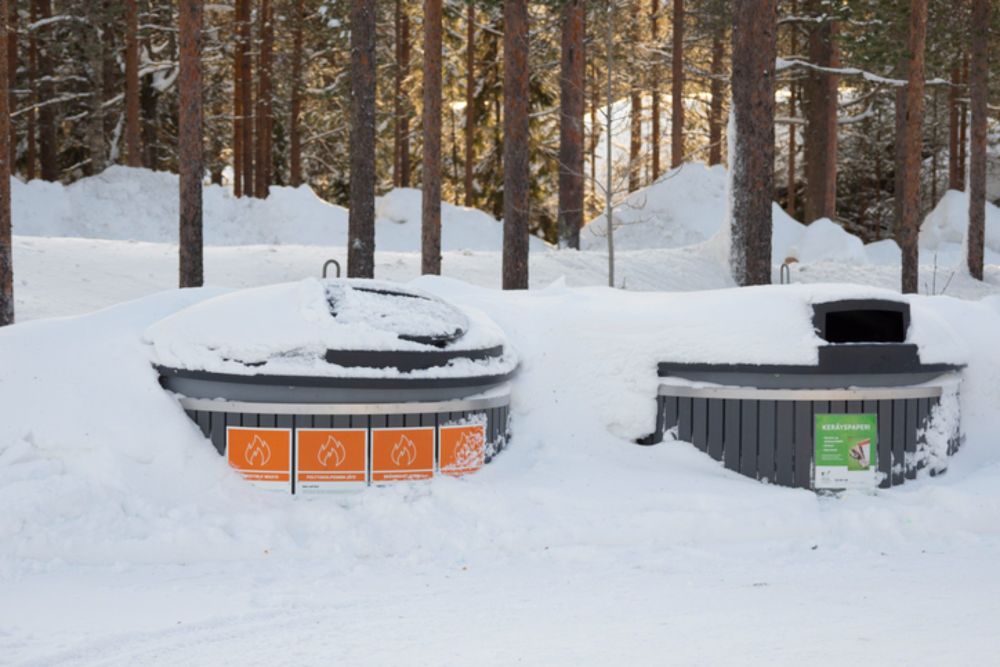
This decision was based on broad patterns, including in our recent study "The strain on scientific publishing"
(link: direct.mit.edu/qss/article/...)
A quick 🧵 1/n
#SciPub #AcademicChatter
This work is currently a preprint, and we welcome any comments, feedback, or criticism! 📝
You can access the full text and code to explore the details and share your impressions: doi.org/10.21203/rs.....
Let’s discuss! 💡
The core team behind this work included:
Myself (@gracoroza /
@gracoroza.bsky.social
)
@MarkKLWong /
@markklwong.bsky.social
@altermatt_lab /
@florianaltermatt.bsky.social
Martin Gossner, who is not on social media
This work is currently a preprint, and we welcome any comments, feedback, or criticism! 📝
You can access the full text and code to explore the details and share your impressions: https://doi.org/10.21203/rs.3.rs-5395446/v1.
Let’s discuss! 💡
The core team behind this work included:
Myself (@gracoroza / @gracoroza.bsky.social)
@MarkKLWong / @markklwong.bsky.social
@altermatt_lab / @florianaltermatt.bsky.social
Martin Gossner, who is not on social media
This work was only possible thanks to the incredible amount of open-access data and a huge collaborative effort involving over 20 authors from around the world. 🌍
This research was part of the Blue Green Biodiversity (BGB) initiative, a collaboration between EAWAG and WSL.
To truly understand biodiversity loss, we need global collaboration, long-term monitoring, and policy changes that integrate functional diversity into urban planning and conservation.
Ecosystem resilience relies on functional diversity—the traits that allow ecosystems to function 🌱⚙️.
Homogenised traits mean ecosystems are less adaptable to change 🔄⚠️.
Conservation strategies must:
Protect minimally impacted habitats 🌳.
Promote habitat heterogeneity 🌾.
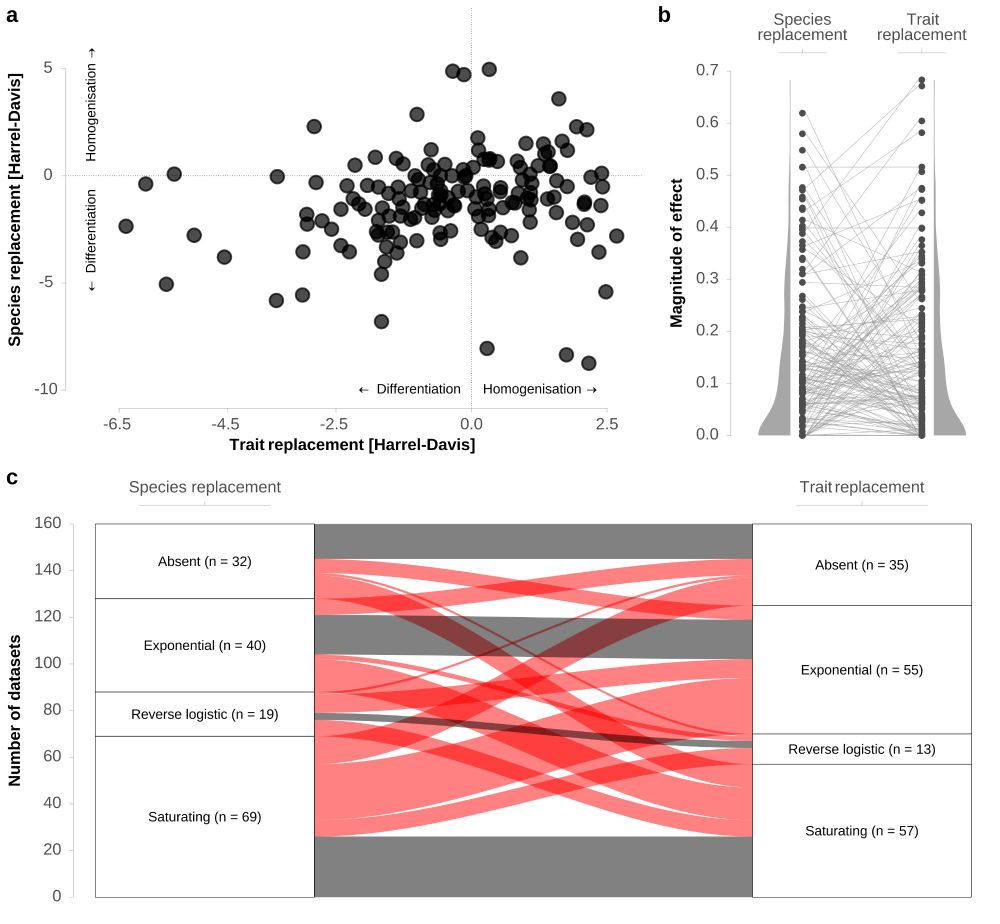
-While 59.3% of datasets show species and traits changing in the same direction, traits are disproportionately homogenised 📏🌱.
-No differences in effect magnitude, but baseline pressure shapes responses.
-Exponential ↗️ and saturating ➡️ turnover often pair.
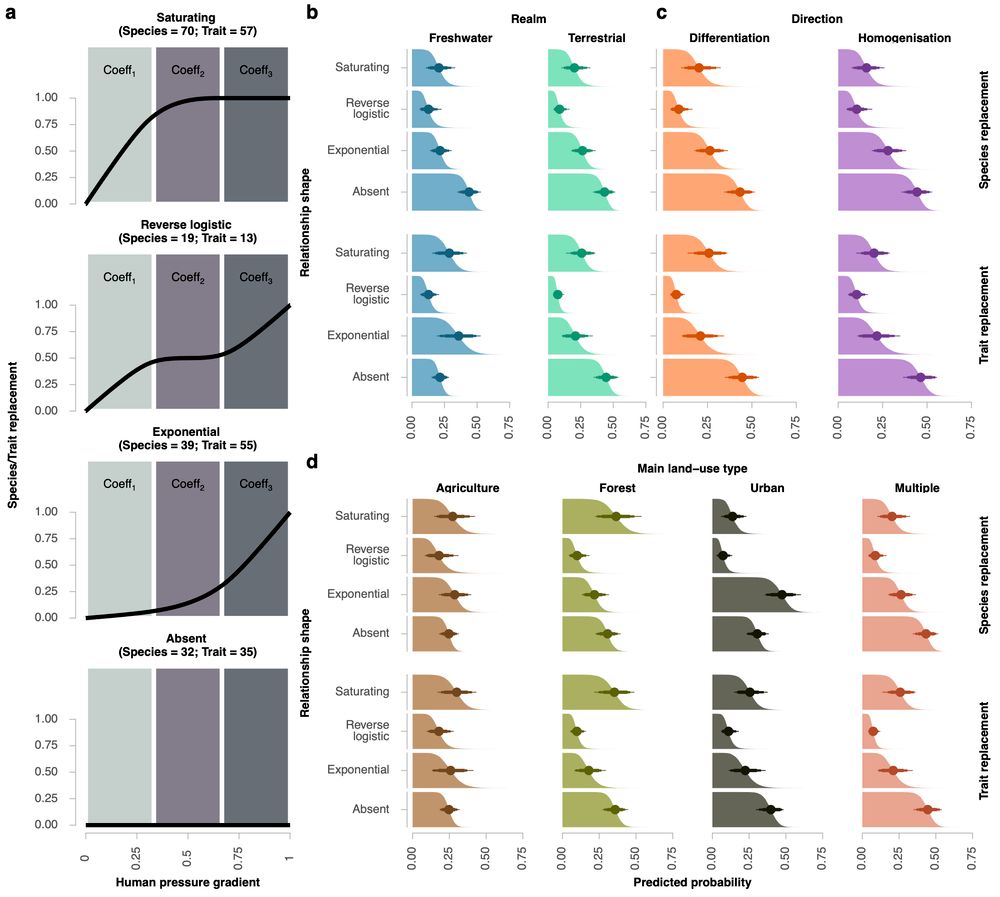
Species and trait turnover face tipping points under intense pressure.
Saturating responses dominate species turnover (43.7%) 🐟🌳, showing high sensitivity to small pressures.
Exponential responses dominate traits (34.4%) 🌆🌱, especially in urban areas.
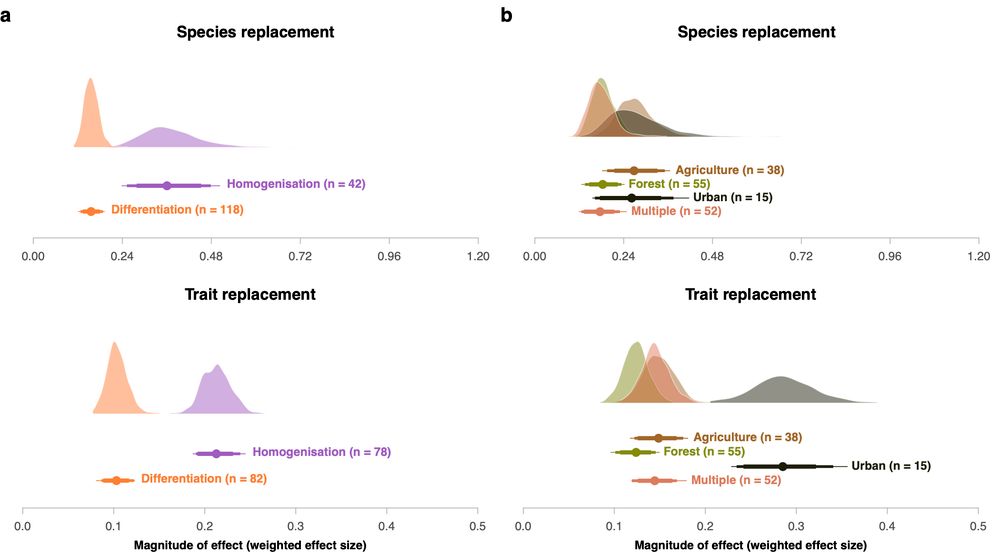
Differentiation is more frequent, but human pressures drive homogenisation much more strongly.
Urban areas are hotspots, with 73.3% of urban datasets showing trait homogenisation.
This intense impact leaves ecosystems fragile and less adaptable. 🌇⚠️
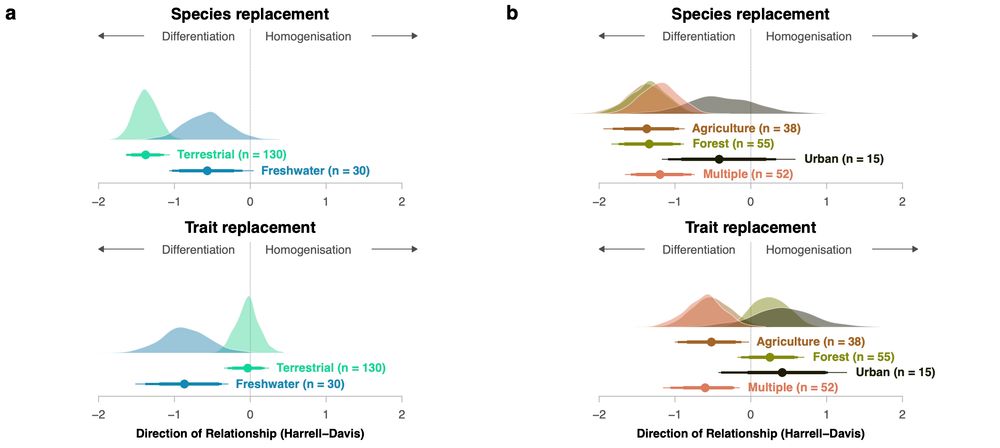
Differentiation is more common globally (70% of datasets), but freshwater and terrestrial ecosystems show heightened vulnerability to homogenisation—species in 40% of freshwater datasets and traits in 46.3% of terrestrial datasets.
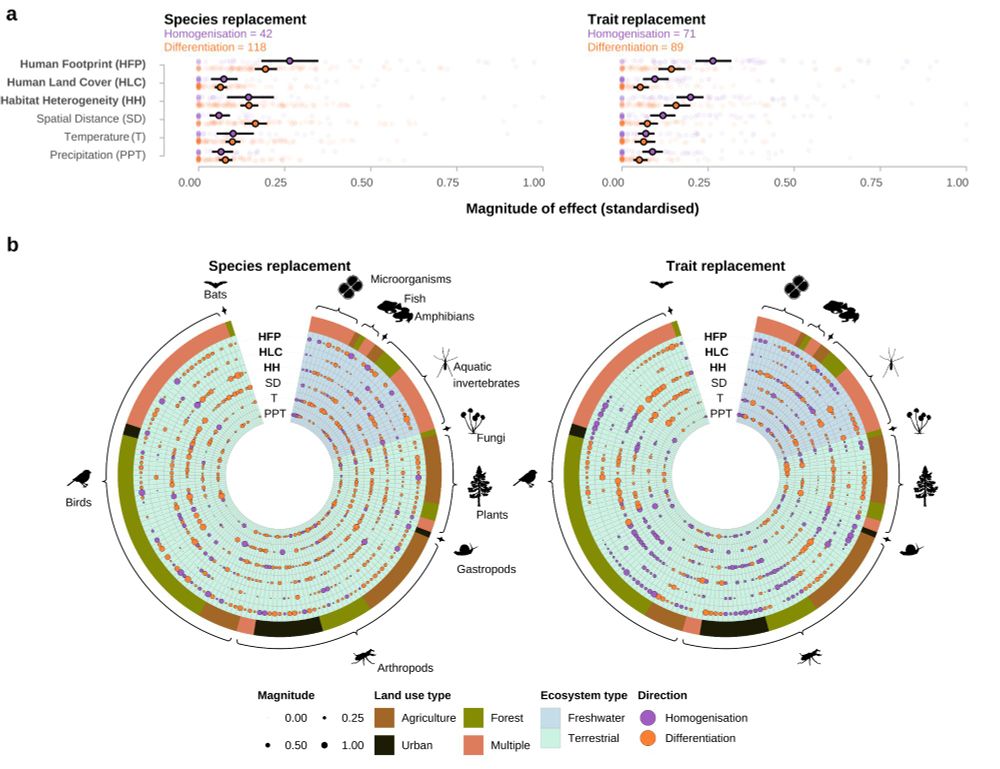
Our first key finding: Human pressure (as in human footprint) outweighs climate and geography, being responsible for 21.5% of species turnover and 20.6% of trait turnover.
Human activity reshapes biodiversity far beyond natural gradients. 🏙️🌾🌍
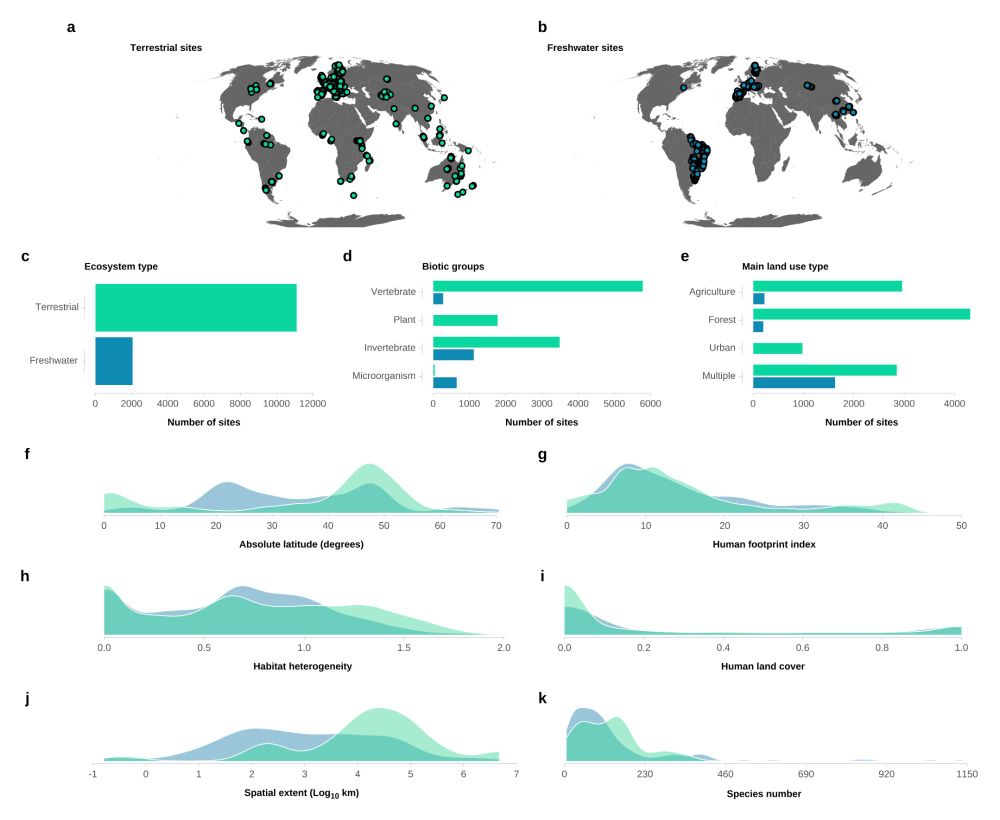
Analysing 160 datasets of over 13,000 local communities across 9 taxa and multiple ecosystems, we studied:
Species turnover (who’s replaced)
Trait turnover (what's replaced)
And how human pressure stacks up against climate or geography.
Human activities—urbanisation, agriculture, and more—are reshaping biodiversity at a global scale. But HOW do these pressures affect species and the traits they carry? 🤔
Hint: It's not just about losing species; it’s about losing variety.

